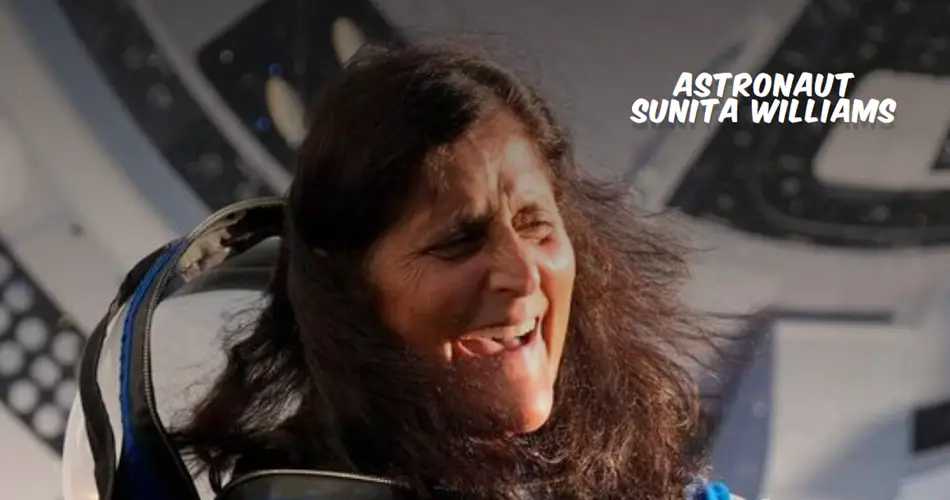Sunita Lyn Williams, an astronaut of Indian-American descent, has etched her name in the annals of space exploration history through her exemplary achievements and inspiring life story. Born on September 19, 1965, in Euclid, Ohio, Sunita Williams has not only contributed significantly to NASA's space missions but has also become a symbol of perseverance, dedication, and excellence.
Early Life and Education
Sunita Williams, fondly known as Suni, was raised in a family that valued education and hard work. Her father, Deepak Pandya, an Indian-American neuroanatomist, and her mother, Bonnie Pandya, of Slovenian descent, supported her aspirations. Growing up in Needham, Massachusetts, Williams attended Needham High School and graduated in 1983. Her interest in aviation and space was ignited early in her life.
Williams pursued a Bachelor of Science degree in Physical Science from the United States Naval Academy in 1987. Her passion for flight and space exploration led her to a Master of Science degree in Engineering Management from the Florida Institute of Technology in 1995. These academic achievements laid a strong foundation for her future career in the Navy and NASA.
Naval Career
Williams began her naval career after graduating from the United States Naval Academy. She was designated a Naval Aviator in 1989 and initially served as a helicopter pilot in the Mediterranean, the Red Sea, and the Persian Gulf. Her experience included a deployment on the USS Saipan during Operation Desert Shield and Operation Provide Comfort.
In 1993, she attended the United States Naval Test Pilot School and subsequently served as an instructor there. Her role as a test pilot saw her flying more than 30 different aircraft types, amassing over 3,000 flight hours. This extensive experience in various aircraft was instrumental in her selection as an astronaut candidate by NASA in 1998.
NASA Career
Williams' journey with NASA began when she was selected as an astronaut candidate in June 1998. She completed her training in 1999 and was assigned various technical roles within NASA. Her first spaceflight opportunity came in 2006 when she was assigned to the International Space Station (ISS) as a flight engineer for Expedition 14 and 15.
First Space Mission: Expedition 14/15
Williams launched aboard the Space Shuttle Discovery on December 9, 2006, as part of the STS-116 mission. During her time on the ISS, she set several records, including the longest single spaceflight by a woman at 195 days. She conducted four spacewalks, totaling 29 hours and 17 minutes, another record for female astronauts at the time. Her work on the ISS included scientific research, maintenance tasks, and educational outreach, where she communicated with students worldwide, inspiring the next generation of space enthusiasts.
Second Space Mission: Expedition 32/33
Sunita Williams returned to space on July 15, 2012, aboard a Russian Soyuz spacecraft as part of the Expedition 32/33 crew. She took over as the commander of the ISS during Expedition 33, making her the second woman to command the ISS. During this mission, she conducted three more spacewalks, bringing her total to seven and further extending her record for cumulative spacewalk time by a female astronaut to 50 hours and 40 minutes.
Contributions and Legacy
Williams' contributions to space exploration extend beyond her impressive records. She has been a part of numerous scientific experiments that have advanced our understanding of space and its effects on the human body. Her work has helped pave the way for future long-duration missions, including potential manned missions to Mars.
In addition to her technical and scientific achievements, Williams has been an ardent advocate for STEM (Science, Technology, Engineering, and Mathematics) education. She has participated in countless outreach programs, inspiring young minds to pursue careers in these fields. Her ability to connect with people from all walks of life has made her a beloved figure and a role model for many.
Awards and Honors
Sunita Williams has received numerous awards and honors throughout her career. Some of the notable recognitions include the Navy Commendation Medal, the Navy and Marine Corps Achievement Medal, and the NASA Space Flight Medal. She has also been inducted into the National Women's Hall of Fame, highlighting her contributions to space exploration and her role as a trailblazer for women in STEM.
Personal Life
Sunita Williams is married to Michael J. Williams, a Federal Aviation Administration helicopter pilot. The couple enjoys outdoor activities such as running, swimming, biking, triathlons, windsurfing, snowboarding, and bow hunting. Williams' adventurous spirit extends beyond her professional life, reflecting her dynamic personality and zest for life.
Conclusion
Sunita Williams' journey from a young girl with dreams of flying to a record-setting astronaut is a testament to her determination, skill, and passion. Her contributions to space exploration, her role as an educator and advocate for STEM, and her ability to inspire others have left an indelible mark on the world. As we look to the future of space exploration, the legacy of Sunita Williams serves as a beacon of what is possible when one dares to dream and strives to achieve those dreams against all odds.



